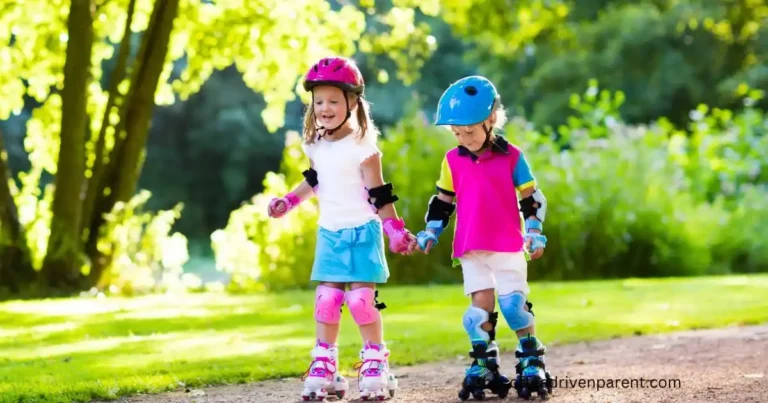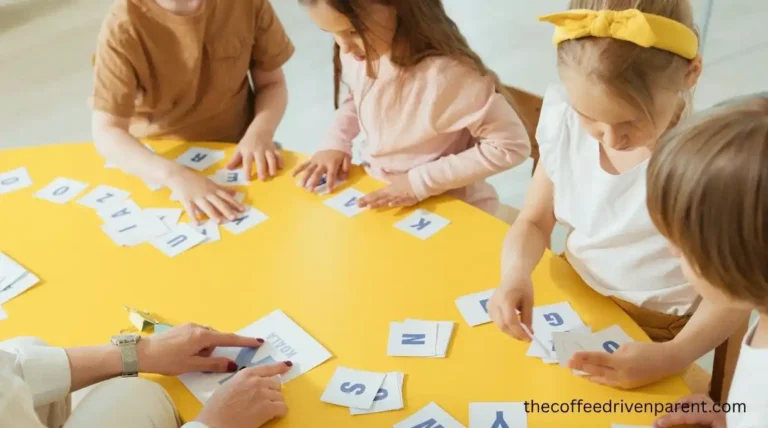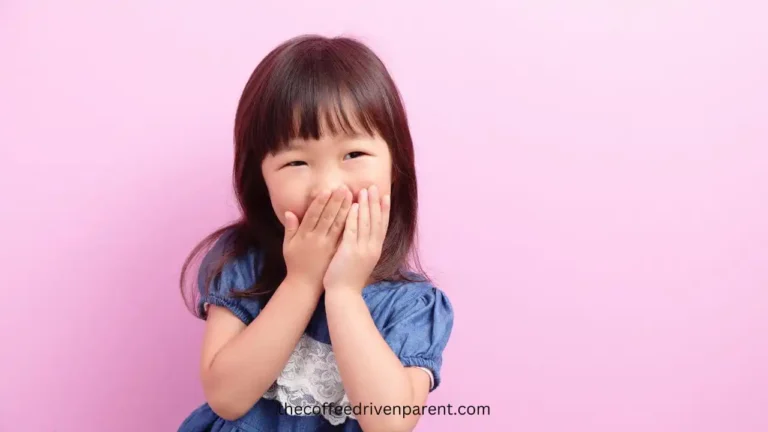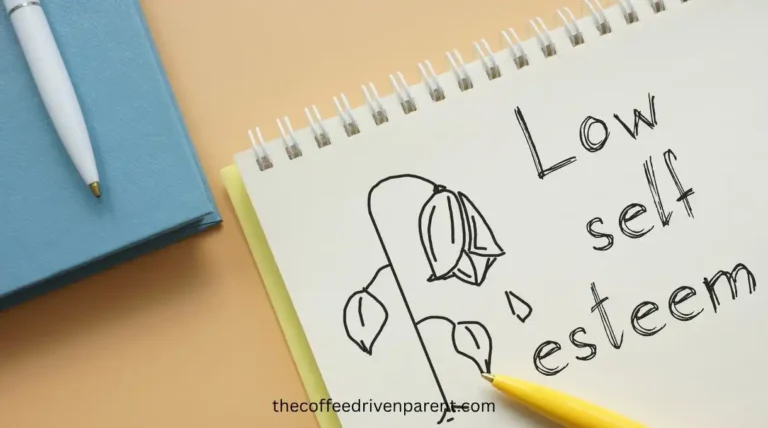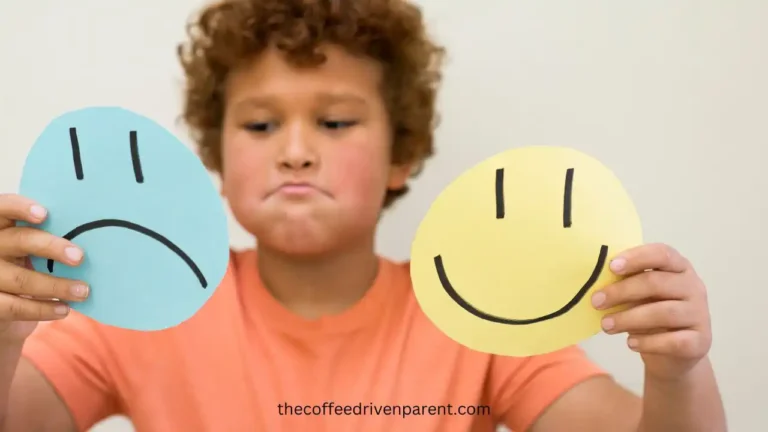When Proven Emotional Release Prompts for Kids Reduce Tantrums

Why I bring you emotional release prompts for kids
I meet many parents who tell me, “My child shuts down when feelings run high.” I understand the worry, because I see the data: 10 % of children aged 3-17 already carry a diagnosed anxiety disorder, while 13 % live with some form of mental or behavioral condition CDC. I know a simple practice to guide children to put inner storms into words, drawings, or movements, as it cuts that weight dramatically. These guiding ideas are exactly what me and you are hunting for the emotional release prompts for kids, let’s explore.
Table of Contents
The silent build-up inside our kids
Children face bigger feelings than their vocabulary. Neuroscientists tracked preschoolers, who showed that early difficulty in naming emotion predicts weaker regulation skills a decade later PubMed. Classrooms echo that struggle. A 2020 French study with fifth-graders found anxiety and depression scores high before any intervention ResearchGate. That Public-health numbers agree. One in seven U.S. children now holds a formal mental-health label, yet barely half receive professional help CDC.
What happens when we ignore the pressure
Brains pay the price first. Long-term scans show preschool depression thins cortical gray matter linked to emotion control Time and the Immune systems follow. Stress that stays bottled up lowers lymphocyte activity, the cells that fight illness Child Mind Institute and the Daily life shows the cracks. Many parents watch homework time explode into tears and refusal because feelings never found a release valve. The pattern repeats, confidence shrinks, and every new challenge feels riskier than the last.
How I use emotional release prompts for kids every day
Why prompts work before lectures
Research proves expression heals. A classic meta-analysis of 146 expressive-writing studies reported a mean effect size d = 0.47, equal to a 23 % health improvement over controls SPARQ. Child-focused trials echo the gain. The fifth-grade study cited above found four brief writing sessions dropped anxiety and depression and even lifted working-memory scores two months later ResearchGate. Labeling boosts self-regulation. Better emotion words in early childhood predict stronger brain activation in control regions during teen years PubMed.
My four families of emotional release prompts for kids
1. Word-based prompts for quick journaling
- “I feel ___ because…” I invite your child to fill the blank with any feeling word.
- “The best/worst part of today was…” I ask for concrete events, not judgments.
Why they work? Writing helps in organizing scattered thoughts, which can reduce physiological stress markers and can even lower blood pressure Child Mind Institute.
Example. After school, you hand your eight-year-old a notecard with the prompt; five minutes later the card becomes a conversation opener instead of a tantrum trigger.
2. Drawing prompts when words feel too hard
- “Draw your day as a weather map.” Sun over recess, thunder over math test.
- “Give your worry a costume.” Cartoonizing fear shrinks its power.
Why they work? Visual metaphors externalize emotion, letting kids discuss the picture rather than defend the feeling. Classroom pilots show non-verbal expressive tasks drop observable distress by session three.
3. Movement prompts to release stored energy
- “Stomp the feeling out.” I cue ten slow stomps while naming the emotion.
- “Blow the balloon.” Deep inhale, long exhale while pretending to fill a balloon.
Physical sequencing tethers emotion regulation to body awareness, aligning with evidence that multi-modal expression increases effect sizes in expressive-writing research SPARQ.
4. Sensory prompts for younger or neurodiverse kids
- “Choose a calm stone.” A tactile object becomes a grounding anchor.
- “Smell the cocoa.” Slow olfactory focus pairs with breath to quiet the limbic alarm.
Sensory focus interrupts the amygdala’s threat loop, giving prefrontal areas time to engage. Parents article summaries point to breathing and mindfulness as powerful co-regulation tools Parents.
How I build a routine you can keep
- Morning minute. You place one written or drawn prompt beside breakfast.
- After-school debrief. I model by answering the same prompt first; and the kids follow.
- Bedtime release list. You ask for three feelings from the day, then invite a short doodle or sentence on each.
Consistency beats length. Meta-analytic data show spacing sessions across a week enlarged health benefits compared with massed practice SPARQ.

Safety guidelines I always share
- Privacy matters. Journals stay unread unless a child volunteers.
- No forced positivity. Negative feelings earn equal ink.
- Professional back-up. Persistent distress, especially self-harm talk, calls for a licensed clinician—not just prompts. Over half of anxious kids never reach treatment, so acting early counts.
Unique perspectives you rarely hear
Cognitive bandwidth returns. The fifth-grade trial reported working-memory gains only in the expressive group, showing that emotional release frees space for math and reading. Immune markers improve faster than mood.
Pennebaker’s lymphocyte findings appeared within six weeks even when self-reports lagged Child Mind Institute. That insight lets me reassure parents who worry when kids still feel sad on day three. Tiny prompts stack big change. The d = 0.47 average from dozens of studies matches or beats effects of many school-based counseling programs that cost far more SPARQ.
Everyday examples to make it real
Seven-year-old Sara drags her feet to soccer. You hand her the “Draw your day as a weather map” sheet in the car. She sketches storm clouds over recess. Conversation follows, revealing a playground argument. Feelings clear, she lines up smiling at practice.
Ten-year-old Ahmed panics before a spelling test. You cue “Blow the balloon” plus “I feel ___ because…” in a notebook. After three slow breaths and two sentences, pulse settles; he starts revision with restored focus.
Four-year-old Nida melts down when the tablet turns off. You offer a smooth “calm stone” and name the feeling: “Stone feels warm; body feels angry.” Language plus touch short-circuits the spiral.
What you now carry forward
You discovered why children’s unspoken feelings become a health and learning risk, how science backs the simple act of guiding expression, and which concrete emotional release prompts for kids you can start today. I showed you word, drawing, movement, and sensory options rooted in evidence ranging from CDC prevalence data to meta-analytic effect sizes.
You saw real-world scripts, timing plans, and safety notes. I invite you to pick one prompt tonight. Consistent small practice, supported by clear science, will help your child grow a lifelong habit of turning inner storms into words , then into calm action.
RELATED POSTS
Crescent Moon Pose for Kids: A 3-Step Fix for Posture, Focus, and Calm
Which Expert low impact exercises for kids Boost Focus Instantly?
Consider 5 Solo Activities for Kids to Promote Independence
Frequently Asked Questions about emotional release prompts for kids
What are emotional release prompts for kids?
Emotional release prompts for kids are simple questions, drawing cues, or movement tasks that invite children to name, describe, or act out difficult feelings. The prompts externalize emotion, making it visible and manageable. They can be written, visual, sensory, or physical, and are always age-appropriate, non-judgmental, playful, flexible, daily tools.
Why do emotional release prompts help children regulate feelings?
Prompts help because expression reduces physiological stress, activates the brain’s language and control centers, and teaches coping routines. By turning unnamed sensations into concrete words, images, or actions, children gain distance from the feeling, understand it, and select healthier responses, building lasting emotional intelligence and self-regulation skills in daily life.
How can I introduce emotional release prompts to young kids?
Start small, model the activity yourself, describe the purpose in plain language, and pick a fun medium like crayons or puppet play. Offer one prompt after school, join in, and keep sessions under five minutes. Praise participation, not outcome. Consistency and shared participation encourage acceptance and routine from the start.
When is the best time to use emotional release prompts for kids?
Choose predictable, low-pressure moments—after school pickup, post-dinner, or bedtime wind-down. Avoid triggering peak distress; children process better once bodies are calm. Regular scheduled practice builds habit, while optional “in-the-moment” prompts during early signs of frustration can prevent escalation without forcing reflection during full meltdowns, without rushing the process for anyone.
Which materials work best for emotional release prompts?
Basic supplies suffice: notebook, markers, scrap paper, play dough, stickers, a soft ball, or smooth stones. Children engage more when materials are colorful, tactile, and accessible. Digital apps can complement but not replace hands-on tools, because sensory feedback strengthens the mind-body connection that underpins emotional release, cheap and widely available.
Can emotional release prompts replace professional counseling?
Prompts are preventive and supportive, not a substitute for therapy when serious issues exist. Use them to teach everyday emotional hygiene, but seek licensed help for persistent sadness, anxiety, self-harm thoughts, trauma, or functional decline. Prompts complement clinical work by reinforcing skills between sessions, for deeper diagnostic and therapeutic guidance.
How long should a child spend on an emotional release prompt?
Ages five to eight usually benefit from three to five focused minutes; older children may enjoy ten. Short, frequent sessions trump long, occasional ones. End before attention wanes, celebrate effort, and invite but never force continuation. Respecting limits keeps the practice positive and sustainable, ensuring consistent, enjoyable, and effective practice.
What if my child refuses emotional release prompts?
Respect refusal, model use yourself, and offer choices: drawing versus movement, indoor versus outdoor. Turn the prompt into a game, or integrate it with a beloved activity like building blocks. Over time, safety and autonomy foster curiosity. If resistance persists, explore whether the prompt feels developmentally mismatched at your pace.
Do emotional release prompts benefit neurodivergent children?
Yes, but adapt them. Use visual schedules, clear step-by-step instructions, and preferred sensory inputs. Non-verbal children may respond best to picture cards or music. Individuals with heightened sensitivities might need soft lighting and noise reduction. Personalizing prompts honors neurodiversity while providing structured outlets for overwhelming emotions, for their unique profiles.
How often should emotional release prompts be updated?
Rotate prompts every few weeks to maintain novelty and relevance. Observe which themes resonate, retire those losing appeal, and introduce new seasonal or situational cues. Updating prevents boredom, allows skill progression, and signals responsiveness to the child’s evolving emotional landscape, sustaining engagement across developmental stages and nurture ongoing developmental growth.

